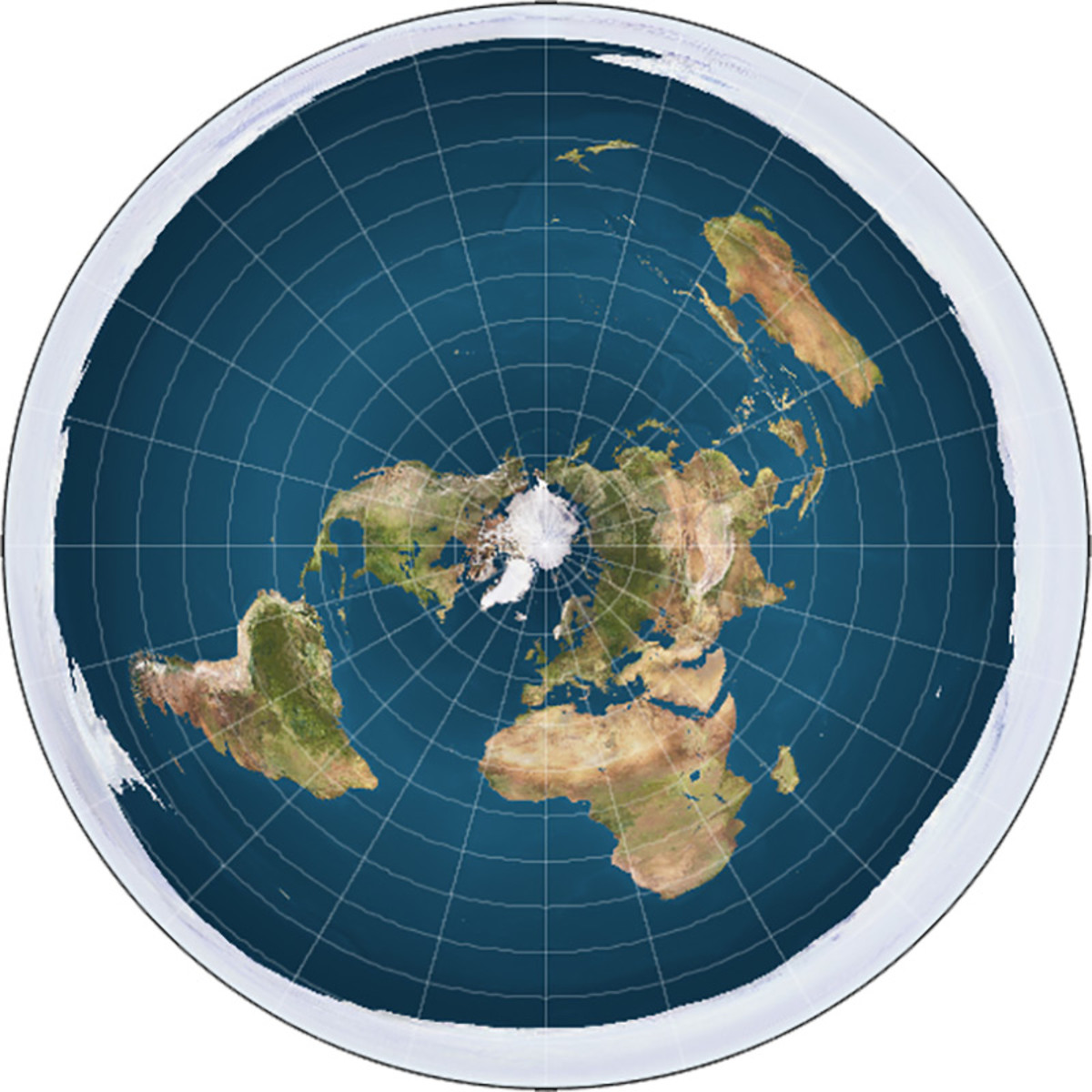Why athletes are drawn to the flat earth theory

Do you believe in gravity, and the science behind planetary formation? Do you turn up your nose at the thought of a giant ice wall at the edge of the world that extends into dark void? Do you believe that the NCAA didn’t purposefully sabotage Villanova’s championship run in order to preserve the ailing Power Five? If so, you’re at odds with a surprising number of people — including NBA stars — who believe the flat-Earth theory in defiance of previously established science. It’s a strange phenomenon to be sure, but one deserving more than a simple scoff.
Kyrie Irving made headlines in mid-February when he asserted, “This is not even a conspiracy theory. The Earth is flat.” He continued, “It’s right in front of our faces. I’m telling you, it’s right in front of our faces. They lie to us.”

Wilson Chandler jumped on the bandwagon as well, advising those skeptical of the flat earth theory to “just walk outside and use your five senses.” And Draymond Green defended Irving from critics who asserted that NASA photos debunked the notion of a flat earth. “Who’s to say that picture is telling the truth?” he pondered during an interview. “I can make a round picture with my iPhone today, with the panorama camera and make it look round.”
How serious are these men, and others who reject a spherical world? While some have jokingly invoked flat-earth theories, such as Shaquille O’Neal, the Flat Earth Society isn’t kidding. Just look at their response to one of their FAQs on their site: “Are you serious?” Their answer: “Yes.”
For the Flat Earth Society, or FES, the proof is in the pudding. “The world looks flat, the bottoms of clouds are flat, the movement of the sun; these are all examples of your senses telling you that we do not live on a spherical heliocentric world,” says the FES.
Flat Earthers and the FES rely on an empirical approach to universe, using what they see and sense to validate their opinions and observations of the world. It’s not a new approach, but it circumvents the more modern and scientific approach.
The theory itself is elaborate, and certainly, the most interesting part is its ice wall. Apparently, in today’s flat earth, you can’t sail off the side, because there is a massive wall of ice that surrounds the known world. “All we know at present,” according to the FES’s website, is that “that snow and hail, howling winds, and indescribable storms and hurricanes prevail; and that in every direction ‘human ingress is barred by unsealed escarpments of perpetual ice,’ extending farther than eye or telescope can penetrate.”
Point, FES. That’s way more exciting than curvature and the laws of physics. And, according to the FES, NASA has never been to space, having faked its accomplishments in a scheme to embezzle its budget.

In many ways, the FES has put together a surprisingly well-rounded theory and their GIFs are absolutely professionally done.
But, let’s assume for a second, that the FES’ reasoning hasn’t convinced you of an elaborate government conspiracy, nor to the earth’s lack of spherical shape. The media’s mocking of Shaq, despite his flat earth commitment actually being a joke, betrays the majority’s paranoia over the refutation of established science.
And the entire situation raises many questions. Why do so many prominent Americans subscribe to these flat earth theories? And why does the FES even exist to begin with?
Is our education system lacking? For celebrities could it be ego? Or solidarity? Could the internet play a factor?
Perhaps the underlying motivator for the flat earth is doubt. You can find a hundred thousand different opinions on the Internet. Pictures are easily doctored. The media contradicts itself and fights over what is real and fake. Global warming is real to some, a hoax to others, and both sides claim to have the facts to prove the other wrong. On just about every issue, there’s a flip side to the same coin.
Irving asks, “If someone didn’t teach you [that] you were spinning on a ball orbiting the Sun, is that what you observe with your five senses?” A reasonable point, it seems.
The FES’s theory may fall flat, but the convictions behind it, and of trusting oneself, are not so easily dismissed. As a culture we’ve reached a tipping point, not off the side of the earth, but into what method of discernment we value and trust more- scientific or empirical. Can what one senses and feels discredit what mathematics prove? Have we not had such a debate between faith and science? Western culture has been on both sides of the spectrum, and it may be turning. After all, assuming we’re on a globe, what goes around comes around.
